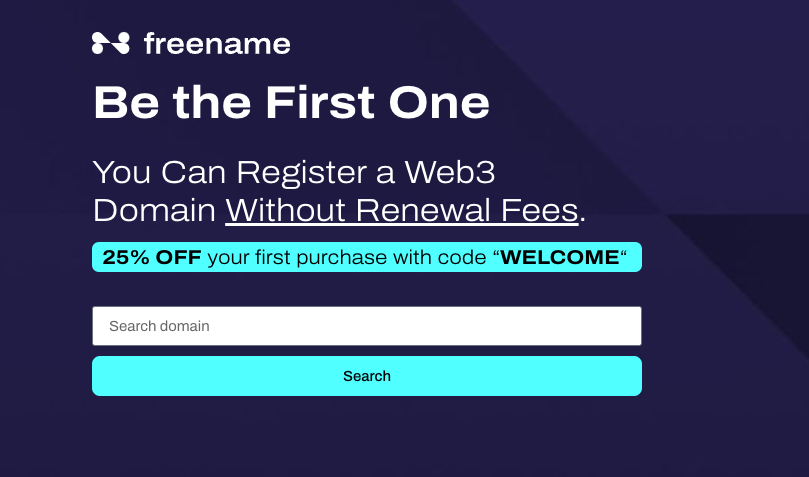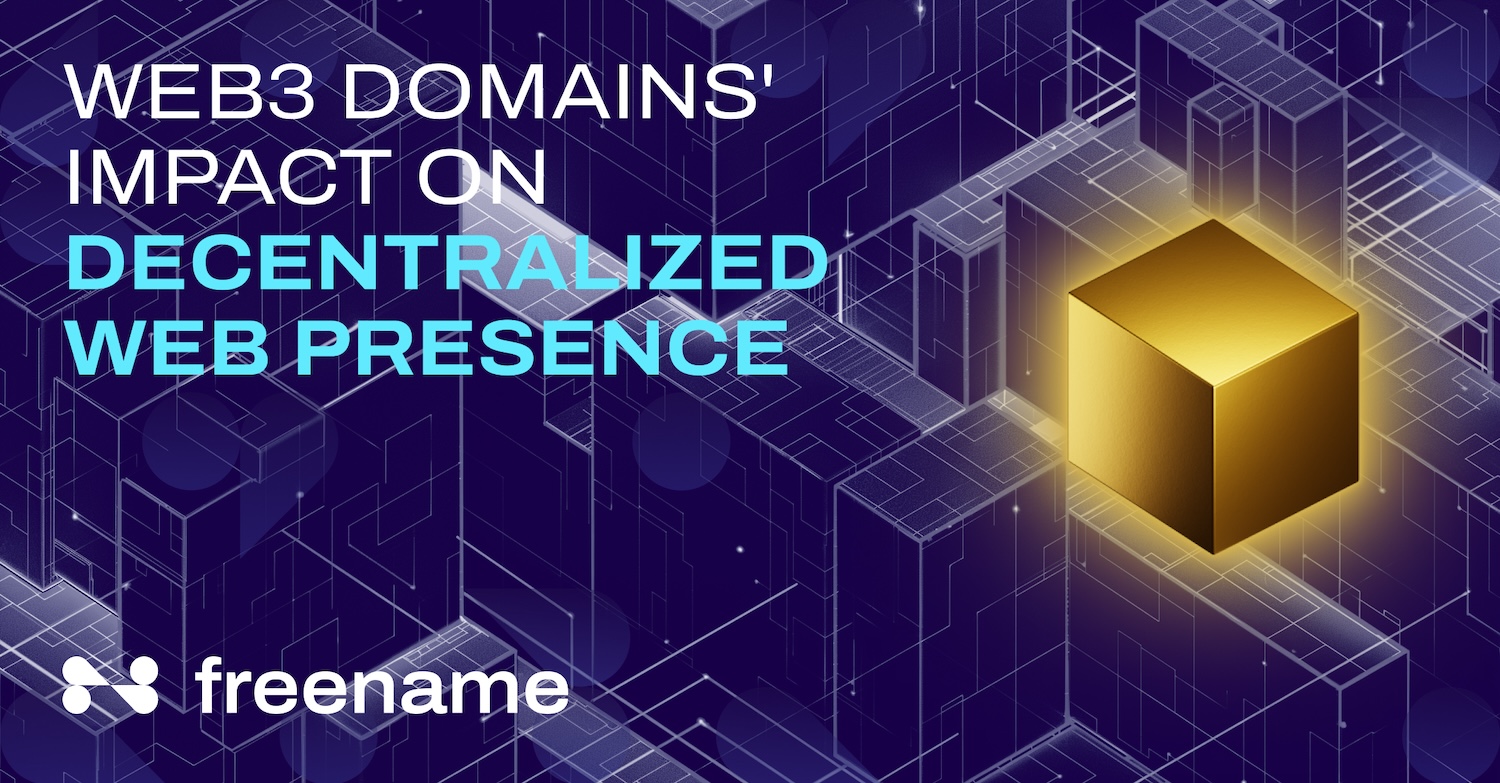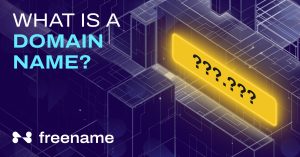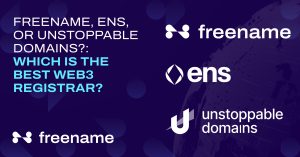The idea of a decentralized web stems from the fact that users have had a new taste of privacy and security brought about by cryptocurrency and blockchain technology. Ever since blockchain technology gained massive popularity in 2014, financial institutions and other industries began shifting their attention from digital currency to the development of blockchain technologies. And with these developments came the concept of Web3.
The internet we know today, Web 2.0, is characterized by the transition from static content to a more dynamic experience where users are no longer just passive consumers but active participants capable of generating and uploading content onto the internet.
However, Web3 domains provide for a new era of internet connectivity and online access backed by blockchain technology. This novel idea of a more democratic and user-centric internet is also known as the Decentralized Web.
This article analyzes the relevance of Web3 domains in building a decentralized web presence, exploring key areas like user ownership, transparency, security, and privacy as means to achieving the goal of a truly decentralized web. Before we start, have a look at our guide on the differences between decentralization and centralization to have a better idea about these two concepts.
How Web3 Domains Affect User Experiences in the Decentralized Web
Decentralized Identity
A Web3 domain acts as your online identity in the dWeb. It can be linked to your various dApps, crypto wallets, and even social media profiles built on blockchain technology. This creates a unified identity that travels with you across the decentralized ecosystem.
Cryptocurrency Transactions
Using a Web3 domain linked to your wallet addresses simplifies transactions and reduces errors. Cryptocurrency transactions have traditionally been a tiring process, riddled with long and complex wallet addresses prone to errors. Web3 domains, however, are revolutionizing the way we interact with crypto by offering a user-friendly and secure solution for sending and receiving digital assets. Here are a few examples of the impact of Web3 domains with regard to cryptocurrency transactions in the decentralized web:
- Simplifying Transaction Processes: Web3 domains act as reliable aliases for your crypto wallet, eliminating the risk of typos and accidental sends. Imagine sending funds to “alice.crypto” instead of a character-set like “1BvBMSEYstWetqTFn5Au4m4GFg7xJaNVN2”. This not only speeds up transactions but also minimizes the chances of sending crypto to the wrong address, a potentially irreversible mistake.
- Seamless Integration with Wallets: Popular crypto wallets like MetaMask are readily integrating with Web3 domain functionality. This allows users to directly send and receive crypto using their chosen domain name within the wallet interface itself. This eliminates the need to switch between platforms or manually enter long wallet addresses.
- QR Code Convenience: Web3 domains can be embedded into QR codes, which further simplifies the transaction process. By scanning a QR code linked to a Web3 domain, users can automatically populate the recipient’s address in their wallet, ready for a quick and secure transaction. This is especially beneficial for offline transactions or in situations where manually entering an address might be impractical.
- Enhanced Security Measures: Phishing attacks are a major concern in the crypto space, where users are tricked into sending funds to fraudulent addresses. Web3 domains make it easier to identify legitimate transactions. Since users can visually confirm the domain name before sending crypto, they are less likely to fall victim to phishing scams that often use lookalike website URLs with slightly altered characters.
- Escrow Services: The use of Web3 domains in conjunction with smart contracts could pave the way for secure escrow services in the dWeb. By linking a transaction to a specific Web3 domain, both parties involved can be assured of the legitimacy and identity of the other party.
Accessing Decentralized Finance (DeFi) Platforms
Web3 domains can act as a central hub for users to manage their DeFi activities. Imagine using your Web3 domain to connect to various DeFi platforms, track your investments, and monitor loan positions across different protocols. This eliminates the need to juggle multiple wallet addresses and simplifies DeFi portfolio management.
Web3 domains, coupled with Decentralized Identifiers (DIDs), could create a unified identity system for DeFi users.
Playing Play-to-Earn Games
Play-to-earn (P2E) games have taken the gaming world by storm, allowing players to earn rewards in the form of cryptocurrency or NFTs through gameplay. However, managing in-game assets across multiple P2E ecosystems can be complex.
Web3 domains offer a solution, streamlining the experience users experience throughout the decentralized web. For example, you can set your Web3 domain as your username or in-game identity and use it to collect and store the crypto rewards you earn in these blockchain-based games.
Participating in Decentralized Marketplaces
Another application of Web3 domains is in buying and selling digital assets using your Web3 domain as your unique identifier. Web3 domains can be integrated with smart contracts used for escrow services in Web3 marketplaces. By linking a transaction to a specific Web3 domain, both buyer and seller can verify each other’s identities, fostering trust and reducing the risk of fraudulent transactions.
Building a Personal Brand in the Metaverse
Your Web3 domain can act as your username or handle in the virtual worlds of the metaverse. Web3 domains allow vendors to establish a recognizable brand within the Web3 marketplace. Imagine browsing a marketplace and seeing “art.store” instead of a long string of alphanumeric characters. This fosters trust and makes it easier for buyers to identify reputable sellers. Also, Web3 domains tied to user profiles or reputation systems could potentially aid in dispute resolution processes within the dWeb. Having a verifiable online identity associated with a transaction could streamline communication and accountability.
Is a Truly Decentralized Web Possible?
It is not uncommon for users to speculate on the possibility of a truly decentralized web. However, users who recognize the important distinctions and similarities between Web 2.0 and the decentralized web (Web3) are in the best position to leverage the improvements in this new iteration.
Limitations of Web3 Domains for Complete Decentralization
While domain name resolution might become more decentralized, the current infrastructure of the internet (cables and servers) would likely remain a mix of centralized and decentralized components.
Also, decentralized solutions for domain name resolution are still under development and face scalability challenges in order to handle the vast amount of traffic a global web demands.
Freename’s Web3 DNS system breaks away from traditional domain management by embracing decentralization. This method prevents any single entity from monopolizing the DNS infrastructure. By integrating blockchain technology, Freename ensures a secure, tamper-proof, and transparent domain resolution process, transforming how we handle online identities.

Complete decentralization would require a significant shift in how the current web functions. Web3 domains are unlikely to replace traditional domains entirely in the foreseeable future.
How to Build Your Web3 Domain
Building a Web3 domain doesn’t necessarily require you to start from scratch. Rather, you can acquire and manage ownership of a Web3 domain through an existing platform. Here’s how:
Choose a Web3 Domain Registrar
There are several platforms that act as registrars for Web3 domains, similar to how traditional domain registrars work for URLs. Freename is one of the popular options which offers a variety of domain extensions (similar to “.com” or “.org” for traditional domains) specific to the Web3 space, such as “.eth”, “.crypto”, or “.nft”.
Search for Domain Availability
You can choose Freename to register a domain, use our search tool to check if your desired domain name is available.

Purchase Your Domain
If your desired domain is available, you’ll typically need to purchase it using cryptocurrency. The price can vary depending on the registrar, domain name length, and the specific top-level domain (TLD) you choose.
Connect Your Crypto Wallet
In order to complete the purchase, you will need to connect your crypto wallet to the registrar platform. This wallet stores your cryptocurrencies and allows for you to interact with blockchain applications. Popular wallet options include Trust Wallet, Coinbase Wallet, and MetaMask.
Manage Your Domain
Once you’ve completed the purchase, you can manage your domain through the registrar’s platform. This usually involves setting up your domain record – which specifies how it points to your crypto wallet address or other Web3 resources. Some platforms might also offer additional features for managing subdomains or customizing your domain’s appearance.
The Importance of Web3 Domains for a Decentralized Web
Web3 domains are more than just addresses. They’re the building blocks of a new digital identity in a decentralized future. As Web3 continues to evolve, expect Web3 domains to play an even more critical role in shaping how we interact and navigate the online world.
The rise of the decentralized web means a phenomenal shift in how we interact with the internet. Web3 domains play a pivotal role in establishing your presence within this new decentralized landscape. They offer a unique combination of user ownership, security, and versatility, empowering you to navigate the Web3 ecosystem with ease.
Whether you’re an individual seeking greater control over your data or a business looking to establish a foothold in the decentralized web, Web3 domains offer a powerful solution.







